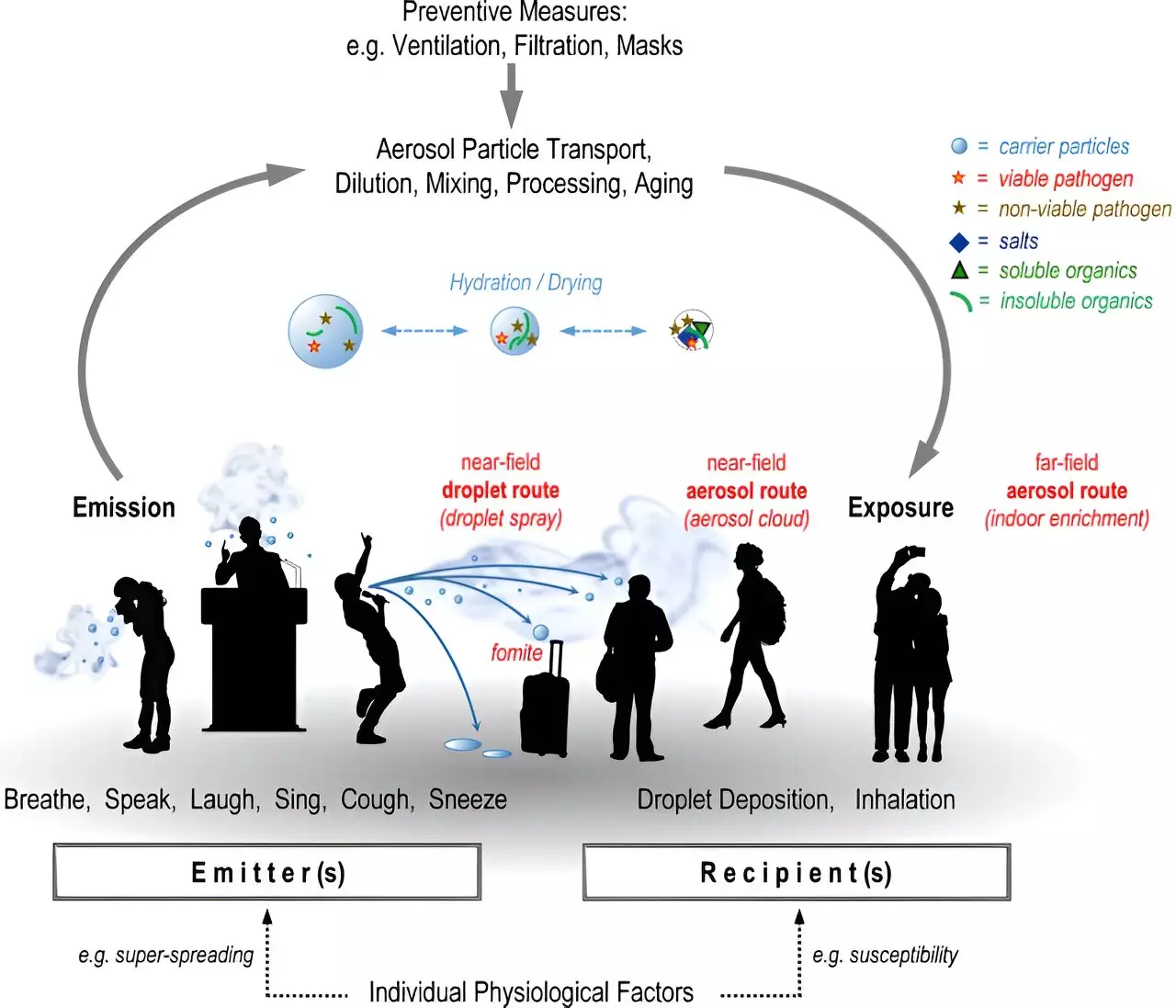During the early days of the COVID-19 pandemic, the world witnessed an unprecedented global lockdown as individuals sought refuge in their homes. In response to this crisis, scientists from various disciplines united to find innovative ways to contribute to the fight against infectious diseases. This article explores the groundbreaking research conducted by a team of atmospheric scientists, chemists, and infectious disease specialists from the Max Planck Institute for Chemistry and their collaborative partners. By collating publicly available information on droplet properties, this team aims to develop effective mitigation strategies for combatting infectious agents.
Intrigued by the relationship between droplet size and respiratory diseases, Christopher Pöhlker, an atmospheric scientist, and his wife Mira, a cloud scientist, decided to delve into this unexplored territory. However, their search led them to discover a paucity of research on the subject. Undeterred, they embarked on their own research endeavor, pooling together existing knowledge and organizing it in a manner conducive to future medical researchers. Recognizing the multidisciplinary nature of their undertaking, the couple formed a team comprising experts from various fields, all committed to parameterizing droplets associated with respiratory infections such as COVID-19.
To begin their investigation, the team scoured available information relating to infectious droplet size. As a result of their research, they developed a comprehensive parameterization scheme. Central to this scheme is the classification of droplets into five distinct types, primarily based on their size, which ranges from less than 0.2 µm to 130 µm. Rather than assigning conventional names to these types, the team opted for a more precise approach by defining each based on the body part from which the droplets originated. Thus, the classification encompassed droplets originating from the lungs, mouth, tongue or lips, and the larynx-trachea.
Acknowledging that complete knowledge of droplet properties is still lacking, the researchers left room within their classification system to accommodate vital data regarding the correlation between droplet size and infection potential. As they recognize, harnessing this information may hold the key to developing effective anti-transmission measures in the ongoing battle against infectious diseases. To further enhance their collating process, the team emphasizes the necessity of conducting human studies. These studies will provide valuable insights that will augment the existing dataset and enable medical researchers to formulate evidence-based preventive strategies.
The collaborative efforts of this multidisciplinary team aim to provide an essential resource for medical researchers. By compiling and organizing publicly available information on droplet properties, the team aspires to equip researchers with a crucial toolkit to develop robust mitigation strategies. This resource will aid in understanding the dynamics of airborne transmission and pave the way for innovative solutions in combating infectious agents.
The research conducted by the team of atmospheric scientists, chemists, and infectious disease specialists is a significant step forward in our understanding of droplet properties. By addressing the dearth of information on respiratory droplet size and collating existing knowledge, this team has filled a crucial gap in our understanding of infectious diseases. The classification system developed will serve as a valuable tool for medical researchers in their pursuit of effective anti-transmission measures. As humanity faces the ongoing threat of infectious diseases, this innovative approach to droplet research offers hope and potential for a safer future.


Leave a Reply